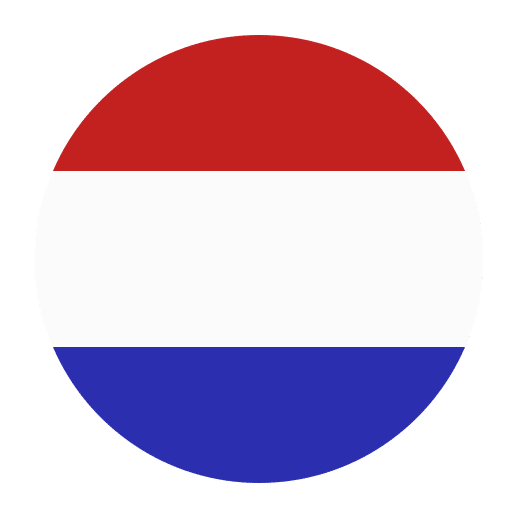Learning a new language is an exciting journey that opens doors to new cultures, people, and opportunities. Dutch, with its rich history and cultural significance, is a popular choice among language enthusiasts. However, like any language, it comes with its own set of challenges. This article will delve into the common hurdles faced by English speakers when learning Dutch and provide strategies to overcome them.
Pronunciation
One of the first hurdles learners encounter is Dutch pronunciation. The Dutch language has sounds that do not exist in English, making it tricky for English speakers to master.
Unfamiliar Sounds
Dutch has several sounds that are unfamiliar to English speakers, such as the guttural “g” and “ch.” These sounds are made at the back of the throat, a place where English speakers are not used to producing sounds. To master these, it’s essential to listen to native speakers and mimic their pronunciation. Using resources like Dutch audio books, podcasts, and practicing with native speakers can be incredibly helpful.
Diphthongs
Dutch diphthongs, like “ui” in “huis” (house) and “ij” in “bij” (at), can be particularly challenging. These vowel combinations create sounds that are not present in English. Practicing these diphthongs in context, rather than in isolation, can help. Try to learn and use them within words and sentences, which will make the sounds feel more natural over time.
Grammar
Dutch grammar, while similar to English in some respects, has its own set of rules that can be confusing for learners.
Word Order
One of the trickiest aspects of Dutch grammar is the word order. Dutch sentences often follow a Subject-Object-Verb (SOV) order, especially in subordinate clauses, as opposed to the Subject-Verb-Object (SVO) order common in English. For example, in English you would say, “I think that he is coming,” whereas in Dutch it would be, “Ik denk dat hij komt” (literally: I think that he comes). Practicing sentence construction and doing exercises that focus on word order can help internalize this aspect of Dutch grammar.
Gender of Nouns
Dutch has three grammatical genders: masculine, feminine, and neuter. Unlike English, which uses “the” for all nouns, Dutch uses “de” for masculine and feminine nouns, and “het” for neuter nouns. Memorizing the gender of each noun can be challenging. A good strategy is to always learn the noun with its article (de or het), which helps in remembering the gender. Flashcards and spaced repetition systems (SRS) can be effective tools for this purpose.
Vocabulary
Building a robust Dutch vocabulary is essential, but it comes with its own set of challenges.
False Friends
False friends are words that look or sound similar in two languages but have different meanings. For example, the Dutch word “winkel” means “shop” in English, not “window” as one might assume. Identifying and memorizing these false friends can prevent misunderstandings. Making a list of common false friends and reviewing it regularly can be beneficial.
Compound Words
Dutch is known for its compound words, which can be very long and intimidating. For example, “tafeltenniswereldkampioenschappen” means “table tennis world championships.” Breaking down these compound words into their individual components can make them easier to understand and remember. Practice reading and constructing compound words to become more comfortable with them.
Listening Comprehension
Understanding spoken Dutch can be particularly challenging, especially due to the speed at which native speakers talk and the presence of regional accents.
Rapid Speech
Dutch speakers often speak quickly, which can be overwhelming for learners. To improve listening comprehension, start with slower, clear speech from language learning resources. Gradually move on to native content like news, movies, and podcasts. Repetition and active listening are key. Try to listen to the same content multiple times and focus on different aspects each time, such as vocabulary, pronunciation, and sentence structure.
Accents and Dialects
The Netherlands has a variety of accents and dialects, which can be confusing. While standard Dutch (ABN – Algemeen Beschaafd Nederlands) is widely understood, exposure to different accents can improve overall comprehension. Watching regional TV shows, listening to local radio stations, and conversing with speakers from different regions can be helpful strategies.
Speaking
Speaking Dutch confidently is often the ultimate goal, but it can be daunting due to fear of making mistakes or not being understood.
Practice and Patience
The best way to improve speaking skills is through practice. Engage in conversations with native speakers whenever possible. Language exchange partners, online language tutors, and speaking clubs are excellent resources. Don’t be afraid to make mistakes; they are an essential part of the learning process. The more you practice, the more confident and fluent you will become.
Think in Dutch
Try to think in Dutch rather than translating from English. This helps in internalizing the language and improves fluency. Start with simple thoughts and gradually move on to more complex ideas. For example, when you see an object, think of its Dutch name. When you plan your day, try to do it in Dutch. This habit trains your brain to operate in the new language.
Reading and Writing
Reading and writing in Dutch are crucial skills that require consistent practice.
Reading
Start with simple texts like children’s books or beginner language readers. Gradually move on to more complex materials like newspapers, novels, and academic articles. Highlight new words and phrases, and look them up. Keeping a vocabulary journal can be useful. Additionally, try to summarize what you read in Dutch to reinforce comprehension and retention.
Writing
Practice writing regularly. Start with simple sentences and gradually build up to paragraphs and essays. Writing emails, diary entries, or even social media posts in Dutch can be good practice. Use language correction tools and seek feedback from native speakers to improve your writing skills.
Cultural Context
Understanding the cultural context is essential in language learning, as it provides insight into how and why certain phrases are used.
Idiomatic Expressions
Dutch, like any language, has its idiomatic expressions that do not translate directly to English. For instance, “met de deur in huis vallen” means “to get straight to the point” (literally: to fall with the door into the house). Learning these expressions can enhance your understanding and make your speech more natural. Make a habit of learning and using one new idiomatic expression each week.
Cultural Insights
Understanding Dutch culture, traditions, and social norms can improve communication and help avoid misunderstandings. For example, the Dutch are known for their directness, which might come across as blunt to English speakers. Familiarize yourself with Dutch customs, holidays, and societal norms through books, documentaries, and interactions with native speakers.
Consistency and Motivation
Consistency and motivation are key to mastering any language, including Dutch.
Set Realistic Goals
Set clear, achievable goals for your language learning journey. This could be learning a certain number of new words each week, being able to hold a basic conversation, or understanding a Dutch movie without subtitles. Having specific targets helps maintain focus and motivation.
Stay Motivated
Find what motivates you to learn Dutch and use it to keep going. This could be a passion for Dutch culture, a desire to communicate with Dutch-speaking friends or family, or professional goals. Celebrate your progress, no matter how small, and don’t get discouraged by setbacks.
Utilize Technology
In the digital age, numerous tools and resources can aid in learning Dutch.
Language Apps
Apps like Duolingo, Babbel, and Memrise offer structured lessons and practice exercises. These can be a great way to reinforce learning on the go.
Online Resources
Websites like DutchPod101, Learndutch.org, and YouTube channels dedicated to Dutch language learning provide a wealth of free resources. These can include video lessons, grammar explanations, vocabulary lists, and pronunciation guides.
Language Exchange Platforms
Platforms like Tandem, HelloTalk, and ConversationExchange connect you with native Dutch speakers who want to learn English. This provides an opportunity for mutual learning and practice.
Immersion
Immersion is one of the most effective ways to learn a language.
Travel
If possible, spend time in the Netherlands or Belgium. Immersing yourself in a Dutch-speaking environment forces you to use the language in real-life situations, which can significantly accelerate learning.
Virtual Immersion
If traveling is not an option, create a virtual immersion environment. Change the language settings on your devices to Dutch, listen to Dutch radio stations, watch Dutch TV shows and movies, and read Dutch news websites. The more you surround yourself with the language, the faster you will learn.
Join a Community
Being part of a language learning community can provide support, motivation, and opportunities for practice.
Language Classes
Joining a Dutch language class, either in-person or online, can provide structured learning and access to experienced teachers.
Online Forums and Groups
Participate in online forums and social media groups dedicated to learning Dutch. These communities offer a platform to ask questions, share resources, and connect with fellow learners.
Conclusion
Learning Dutch as an English speaker comes with its challenges, but they are not insurmountable. By focusing on pronunciation, grammar, vocabulary, listening comprehension, speaking, reading, writing, cultural context, consistency, motivation, and utilizing technology and immersion, you can overcome these hurdles. Remember, language learning is a journey, not a destination. Stay patient, practice regularly, and enjoy the process of discovering a new language and culture.

